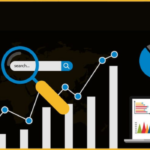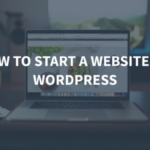Introduction
A. Brief overview of the importance of website speed in user experience and SEO
Highlighting the critical role of fast-loading websites in retaining user interest.
Emphasizing the impact of website speed on search engine rankings and overall online success.
B. Introduction to the concept of WordPress performance optimization as a means to turbocharge your website
Defining the purpose of the guide: enhancing the speed and efficiency of WordPress websites.
Setting the tone for the subsequent exploration of WordPress performance optimization strategies.
Understanding the Need for Optimization
A. Explaining the impact of slow-loading websites on user engagement
Illustrating the negative effects of sluggish website performance on user satisfaction and bounce rates.
Emphasizing the correlation between website speed and positive user experiences.
B. Discussing the role of website speed in search engine rankings and overall online visibility
Exploring how search engines prioritize fast-loading websites.
Connecting website speed to improved visibility, SEO rankings, and organic traffic.
Assessing Your Current WordPress Performance
A. Tools and metrics for measuring website speed
Introducing tools like Google PageSpeed Insights, GTmetrix, and others for performance evaluation.
Providing insights into the key metrics used to assess WordPress website speed.
B. Identifying performance bottlenecks specific to WordPress sites
Discuss common performance issues in WordPress, such as large images, unoptimized code, and excessive plugins.
Guiding readers on how to identify and diagnose specific bottlenecks in their WordPress sites.
Strategies for WordPress Performance Optimization
A. Optimizing Images and Media Files
Introduction to image compression and optimization plugins
Explaining the importance of compressing images to reduce file sizes.
Recommending popular image optimization plugins for WordPress.
Best practices for handling media files in WordPress Offering tips on organizing and managing media files efficiently within the WordPress environment. Highlighting the impact of media file organization on overall site performance.
B. Caching Techniques
Explaining the benefits of caching in speeding up page loads
Clarifying the concept of caching and how it minimizes redundant server requests.
Demonstrating how caching improves the loading speed of WordPress pages.
How to implement and configure caching plugins for WordPress Providing step-by-step instructions on selecting and configuring caching plugins. Offering insights into optimizing caching settings for specific website needs.
C. Minification and Compression
Understanding the impact of code minification and compression
Defining code minification and compression and their role in reducing load times.
Discussing the benefits of streamlined, compressed code for WordPress performance.
Recommended tools and plugins for achieving efficient code delivery Introducing tools and plugins that facilitate the minification and compression of CSS, JavaScript, and HTML. Offering guidance on integrating these tools into the WordPress development workflow.
Recommended tools and plugins for achieving efficient code delivery Introducing tools and plugins that facilitate the minification and compression of CSS, JavaScript, and HTML. Offering guidance on integrating these tools into the WordPress development workflow.
D. Choosing a Lightweight Theme
Importance of theme selection in WordPress performance
Discussing how the choice of a theme influences site speed and overall performance.
Providing criteria for identifying and selecting lightweight and optimized WordPress themes.
Criteria for identifying lightweight and optimized themes Outlining key factors to consider when evaluating themes for speed, responsiveness, and performance. Recommending specific lightweight themes known for their efficiency.
E. Database Optimization
Cleaning up and optimizing the WordPress database
Explaining the significance of a well-maintained database for site speed.
Introducing plugins and techniques for cleaning up and optimizing the WordPress database.
Plugins and manual techniques for efficient database management Listing popular database optimization plugins and providing manual steps for those who prefer a hands-on approach. Offering insights into the importance of regular database maintenance.
F. Content Delivery Network (CDN) Integration
Benefits of using a CDN for global content distribution
Describing how CDNs enhance website speed by distributing content across servers worldwide.
Highlighting the positive impact of CDNs on user experience and page load times.
Advanced Optimization Techniques
A. Server-Side Performance Enhancements
Exploring server-level optimizations for WordPress
Discussing advanced server-side optimizations that go beyond typical hosting configurations.
Exploring options for optimizing server performance for WordPress sites.
B. Lazy Loading and Deferred Loading
Implementing lazy loading for images and other elements
Defining lazy loading and its role in deferring the loading of non-essential elements.
Providing implementation guidelines for incorporating lazy loading into WordPress websites.
C. Monitoring and Continuous Improvement
Utilizing monitoring tools to track website performance over time
Introducing performance monitoring tools for ongoing analysis of website speed.
Discussing the importance of continuous monitoring for maintaining optimal performance.
Testing and Measuring Results
A. Conducting before-and-after performance tests
Outlining the steps for conducting comprehensive performance tests before implementing optimizations.
Emphasizing the importance of benchmarking to measure the impact of optimizations.
B. Interpreting the results and gauging the impact of optimizations on website speed
Providing guidance on interpreting performance test results and identifying areas of improvement.
Encouraging readers to analyze data to gauge the success of implemented optimizations.
Common Pitfalls and Troubleshooting
A. Addressing potential challenges and issues during the optimization process
Identifying common pitfalls and challenges that may arise during the optimization process.
Offering solutions and troubleshooting tips to address issues and ensure successful optimization.
B. Troubleshooting tips for common performance-related problems in WordPress
Providing a troubleshooting guide for common performance-related problems, such as plugin conflicts or server issues.
Empowering readers with the knowledge to identify and resolve issues independently.
Conclusion
A. Recap of key WordPress performance optimization strategies
Summarizing the essential strategies covered in the guide for turbocharging WordPress websites.
Reinforcing the importance of ongoing optimization efforts for sustained performance.















